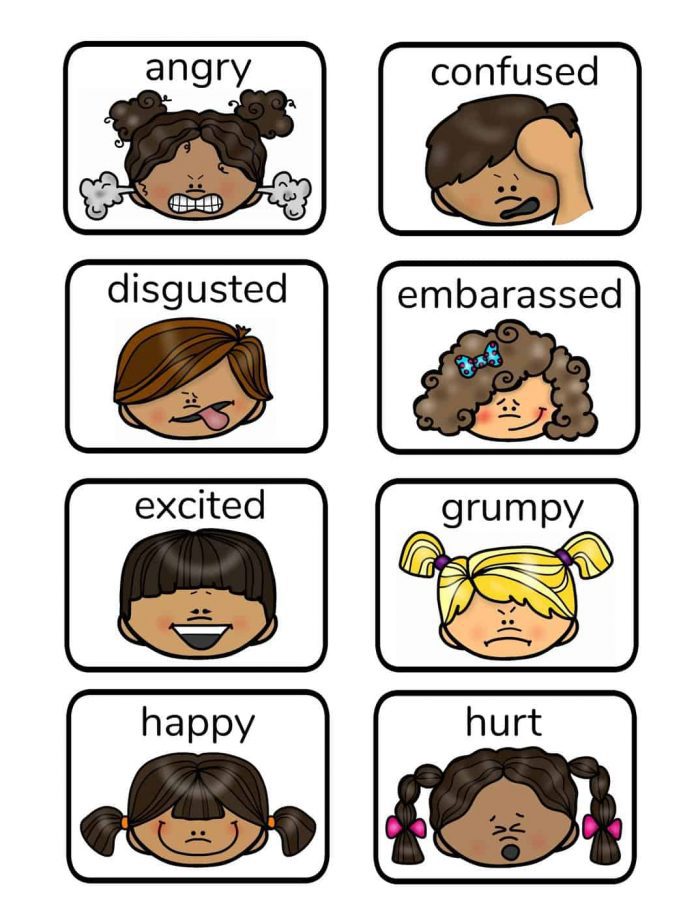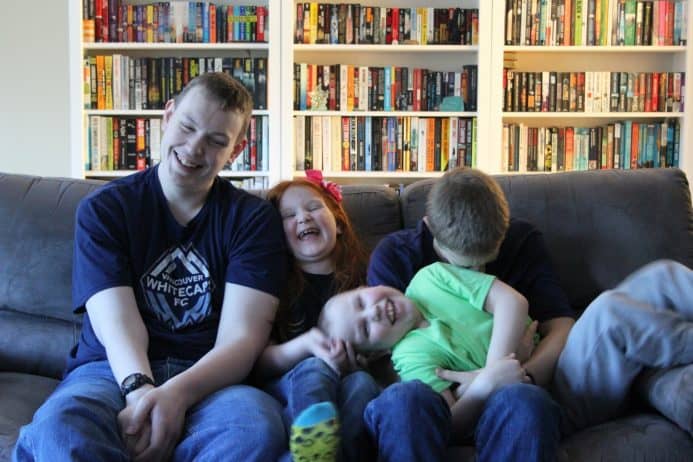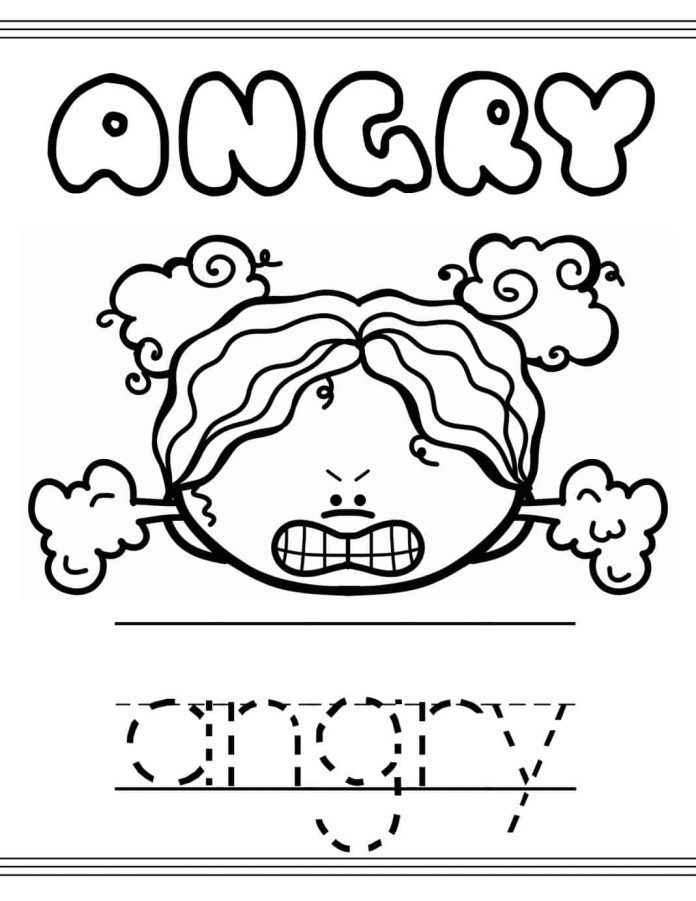Emotional intelligence is defined as:
the capacity to be aware of, control, and express one’s emotions, and to handle interpersonal relationships judiciously and empathetically
and I think we can all agree that this is a crucial skill in all areas of life.
However.
Before we can learn how to deal with our feelings, develop healthy emotional coping skills and respond appropriately to the feelings of others, we need to be able to recognize our emotions.
Unfortunately, this is not one of those skills that our children can just acquire without any help from us. Instead, we should be helping our kids, from an early age, to understand the feelings they, and the people around them, are experiencing and how to respond appropriately.
Once children are able to recognize their own feelings, they are less likely to exhibit negative behaviors such as temper tantrums, hitting, biting, and defiance. In addition, when they can spot the tell-tale signs of other people’s emotions, they are better equipped to offer help and guidance to others.
So how exactly do you teach emotional intelligence?
Use Age-Appropriate Language
From the time we are infants we understand that by giving a smile we can receive a smile and that this makes us feel good. Likewise, we understand from a very early age, that a sad face indicates unhappiness, which does not feel good.
So there is no need to wait until your child is three or four, before teaching emotional intelligence.
Stick To Basic Emotions To Begin With
Begin by teaching your child about basic emotions such as sad, happy, and scared. When you are reading a book or watching a show together, stop and ask your child “How do you think they feel?” or “How would that make you feel?” This will not only help your little one recognize their own emotions but it will help them to recognize the feeling of others.
This also begins to teach your child about empathy. We all know that small children operate in their own universe and give little thought to anyone or anything other than themselves. Once your child begins to recognize emotions in other people they are more likely to understand things such as “If I push my sister over it will make her sad” and this, in turn, makes them less likely to do it.
Be Guided By Your Child
You know better than anyone else, how much your child is capable of understanding at any given age. Therefore there are no hard and fast rules about when to begin introducing more complex emotions such as embarrassment, frustration, and nervousness.
When you think they are ready and you see them exhibiting one of these emotions themselves, talk about it. Let your child know that the angry feeling they have right now because they cannot fit those bricks together, is frustration. Explain that we feel it when we are trying very hard to do something but cannot quite manage it.
Let your child know that this is a normal feeling but that they should resist the urge to throw the bricks across the room. Offer healthy strategies to deal with frustration such as deep breathing, taking some time away from the thing that is making you frustrated, doing something physical to release tension, asking for help from someone else, or any combination of these and other coping strategies.
Be A Model
During these types of teaching moment, you can tell your child that, for example, “Sometimes I get frustrated too. When it happens to me I – “and share your healthy coping strategies.
The is also great worth in sharing how you have coped badly and what has happened as a consequence, as well as sharing the fact that sometimes you struggle to do the right thing.
Outside of those discussions, remember to model the behaviors you would like your child to develop. Words are powerful but actions are more so and it doesn’t matter how much you talk the talk unless you feel the feels your little one won’t learn to manage emotions from you.
Include Emotions In Your Everyday Discussions
Take the opportunity to highlight emotions in your day-to-day activities. Ask how your child feels about things, or how they think other people might feel. You can also share that you can see your child is experiencing certain emotions. For example “I see you are very happy to be going to the park” or “You look very sad that we have to go home now.”
This will help them connect emotions with language which in turn give your child the tools to communicate about their feelings more easily.
Don’t forget to share your own feelings and to include all members of the family in these discussions. When the entire family is open to discussing their feelings, talking about the right thing to do, and admitting when they do the wrong thing, your child will feel comfortable doing the same.
Teach Your Child Emotional Coping Skills
The next step in learning how to deal with our emotions is the development of coping skills.
For example, you can teach your child to:
- Take deep breathes when they feel overwhelmed.
- Have a self-imposed time-out if they are feeling angry.
- Come and talk about things whenever they need to but especially if they feel confused, worried, or uncertain about their feelings.
You can also ask questions such as “If your friend pushed you over, how would you feel?” and follow this up with “What would you do about that?” This will help “pre-load” healthy responses by giving your child the opportunity to think about a situation, without the pressure of sudden heightened emotions.
Don’t Forget To Share “How To Have Healthy Response To The Emotions Of Others”
We have a tendency to focus on helping our children deal with their own emotions and to provide an appropriate response to other people, but there is one important area we often miss.
How to deal with the feelings evoked by the actions and words of others.
I mean the kind of thing where:
- We try to cheer someone up, they do not feel better and we blame ourselves for not being a good enough friend.
- You do something innocuous, someone else takes random offense and becomes agitated and we feel responsible for making them angry.
- Another person expects you to suppress your feelings because they do not care, your feelings make them uncomfortable, etc.
Of course, emotional intelligence is a lifelong lesson, but by starting them out on the right path from an early age you are providing your child with the best possible tools with which to cope with interpersonal relationships and the stresses of life.
Emotions On Faces – Activity Book
To make things a little easier, to begin with, we have a free, downloadable, emotions activity book. The activity book contains:
- 15 Colour-in and trace the word pages
- 15 Pairs Matching Game
- 15 FlashCards
And it looks at 15 different emotions; Angry, confused, disgusted, embarrassed, excited, grumpy, happy, hurt, interested, proud, sad, scared, shocked, shy, and tired.
The pages are A4 paper sized by default – but you can make them larger or smaller when you print if you prefer. Here is an example of three of the colour in and trace the words pages.
Emotions Activity Book – Colour And Trace Pages – Examples
This is how the flashcards look.

And the matching pairs game.

I hope you enjoy the activity book and Id love to hear your stories about teaching your child about emotions and what you may have learned along the way.










